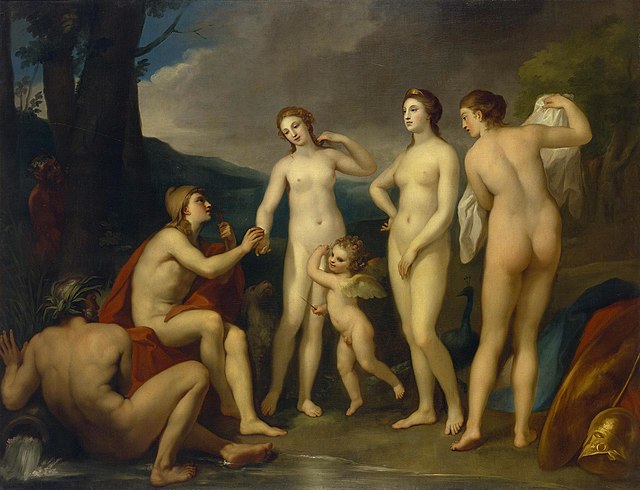A vase is an open container. It can be made from a number of materials, such as ceramics, glass, non-rusting metals, such as aluminium, brass, bronze, or stainless steel. Even wood has been used to make vases, either by using tree species that naturally resist rot, such as teak, or by applying a protective coating to conventional wood or plastic. Vases are often decorated, and they are often used to hold cut flowers. Vases come in different sizes to support whatever flower is being held or kept in place.
Neoclassical vase; circa 1790; jasper; height: 25.4 cm, width: 18.7 cm; Victoria and Albert Museum (London)
The David Vases; 1351 (the Yuan Dynasty); porcelain, cobalt blue decor under glaze; height: 63.8 cm; British Museum (London)
Detail of a red-figure lekanis; 365–350 BC; terracotta; Metropolitan Museum of Art (New York City)
Red-figure mixing vessel; 330-320 BC; terracotta; from Apulia (south Italy); Getty Villa (Los Angeles, USA)
Neoclassicism, also spelled Neo-classicism, emerged as a Western cultural movement in the decorative and visual arts, literature, theatre, music, and architecture that drew inspiration from the art and culture of classical antiquity. Neoclassicism was born in Rome, largely due to the writings of Johann Joachim Winckelmann during the rediscovery of Pompeii and Herculaneum. Its popularity expanded throughout Europe as a generation of European art students finished their Grand Tour and returned from Italy to their home countries with newly rediscovered Greco-Roman ideals. The main Neoclassical movement coincided with the 18th-century Age of Enlightenment, and continued into the early 19th century, eventually competing with Romanticism. In architecture, the style endured throughout the 19th, 20th, and into the 21st century.
Psyche Revived by Cupid's Kiss; by Antonio Canova; 1787; marble; 155 cm × 168 cm; Louvre
Charles Towneley in his sculpture gallery; by Johann Zoffany; 1782; oil on canvas; height: 127 cm, width: 102 cm; Towneley Hall Art Gallery and Museum, Burnley, UK
Johann Joachim Winckelmann, often called "the father of archaeology"
Anton Raphael Mengs; Judgement of Paris; circa 1757; oil on canvas; height: 226 cm, width: 295 cm, bought by Catherine the Great from the studio; Hermitage Museum, Saint Petersburg, Russia








